The history of gravel racing - cycling's newest trend is older than it looks
With global coverage, oversubscribed lotteries, huge turn outs, big prize purses and superstar names riding for both money and kicks, it’s safe to say gravel racing has landed. But how did we get here?

Anne-Marije Rook
At this year’s Unbound Gravel, 4,000 cyclists took to the start line to race across the famed Flint Hills of Kansas, with event distances ranging from 50 to 350 miles.
The 200-miler marquee event is also part of the Life Time Grand Prix Series, a seven-race series with a $250,000 prize purse contested by 70 handpicked professionals, including ex-WorldTour riders such as Peter Stetina, Alexey Vermeulen, Alex Howes, Kiel Reijnen, Lachlan Morton, Ruth Winder and Emily Newsom.
Even those still earning a living racing in Europe have been known to show up, with the likes of Peter Sagan, Daniel Oss and Tiffany Cromwell having headlined the 100-mile Unbound race.
Global coverage. Oversubscribed lotteries resulting in huge turn outs. Superstar names riding for both money and kicks. It’s safe to say gravel racing has landed. But how did we get here, and in such a relatively short space of time? As another Sagan, Carl the scientist, famously said, “you have to know the past to understand the present.”
From Paris, France to Paris, Canada
The etymology of ‘gravel’ takes you back to 13th century France. Grevele was Old French for ‘sand’ or ‘gravel’ and a diminutive of the modern grève. In Breton it was grouan. From here we can take a circuitous route, or indeed a giant leap, to the pavé and the plugstreets. These cobbled and gravel roads of Northern France and Flanders have attracted bike racers for years, most famously in the shape of Paris-Roubaix, which was first run in 1896.
Initially they were raced on cobbles because all roads in Europe were cobbled. But as time passed, and as elsewhere road surfaces improved, the stones, or setts, of France remained. They were ideally suited to the rigours of the coal mining industry that dominated the region at the time. Hard, durable and replaceable, they could take a beating from the heavy-duty trucks used to move the coal. And they could hand one out as a prize trophy. The cobbles themselves have become as celebrated as the bike races they featured in. Unforgiving to ride over and crash on, they helped to make riders legends. They broke plenty at the same time, too.
Fast forward another hundred years, back across the Atlantic this time, to Ontario, Canada. In 1994 the first Paris to Ancaster bike race took place. Ridden on the same day as Paris-Roubaix in early April, it was a tribute race. Featuring a mix of paved and unpaved roads, including gravel and dirt paths and trails, it drew inspiration from those epic European one-day races that featured glory, suffering and plenty in between. Created by John Thorpe, it started as a 70km route, with 264 entries. Now in its 27th edition, the race has expanded to include a 100km distance, alongside the 70km and the 45km, an in 2022 over 2,200 people of all ages completed the three routes.
Get The Leadout Newsletter
The latest race content, interviews, features, reviews and expert buying guides, direct to your inbox!
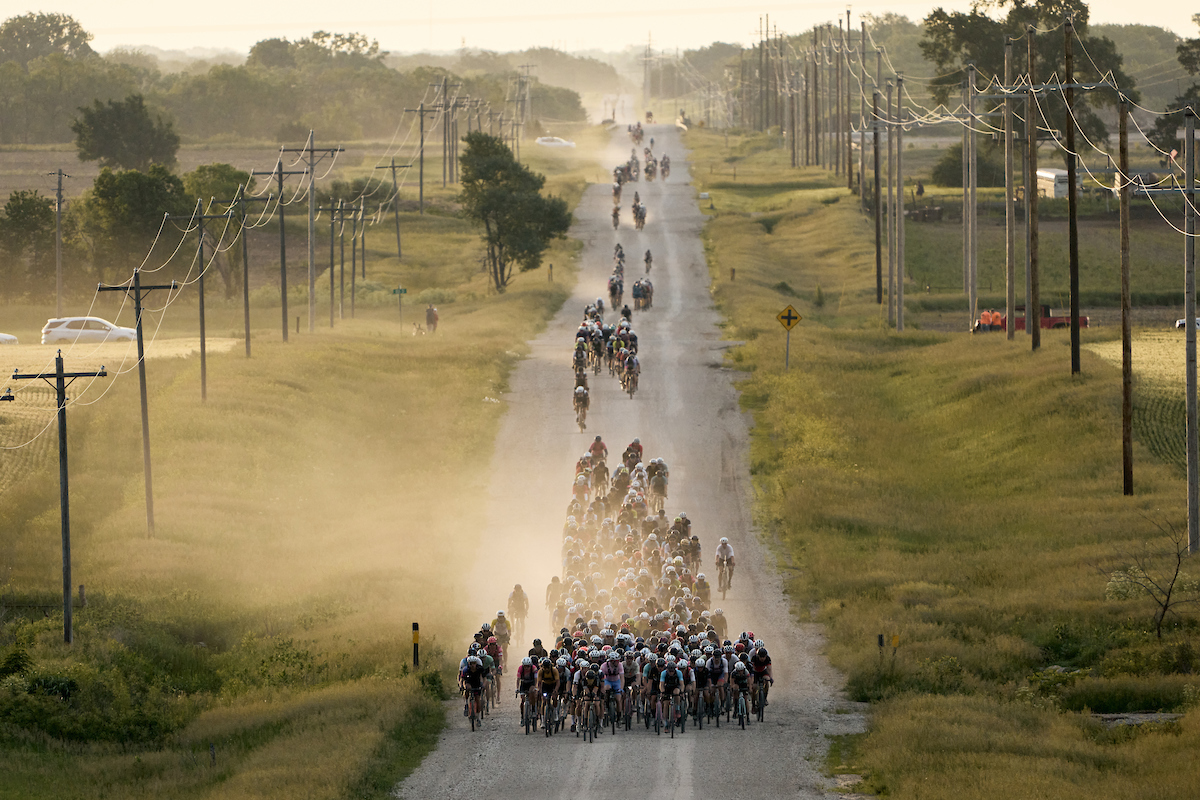
The peloton at the 2022 Unbound Gravel
"Let's ride some dirt"
Paris to Ancaster is certainly one of the earliest gravel races, run for many years before the term had taken hold. Back then the races were often born from group rides where friends tackled local roads and trails on a mix of cyclo-cross, road and mountain bikes. Michigan's Barry-Roubaix is another tribute race of sorts. It was first run in 2009, but its roots were sown far earlier on the gravel roads found in the western part of the state of Michigan.
“There’s a lot of hypotheticals out there as far as what really started ‘gravel’ racing in the area,” said Scott TenCate, Barry Roubaix Co-Race Director since 2013 and one of seventeen finishers that inaugural year.
"But here in Michigan we have very cold winters and coming into the spring, a lot of the mountain bikers couldn't ride the local trails, because we had the freeze thaw that was going on. And so they were finding alternatives to being able to ride single track and from the stories that I've heard, it kind of started to migrate towards ‘Let's ride some dirt, gravel, seasonal roads'...that kind of stuff, because they couldn't ride the single track.”
Even a cursory glance at a modern gravel bike confirms that the discipline owes much to both cyclocross and mountain biking. Naturally, those early gravel races did too.
“Rick and Kathy Plite are the founders of the Barry Roubaix and the original owners and race directors,” said TenCate. “In about 2004, 2005 they ran a cyclocross series here in West Michigan. They had done a ton in the community as far as outreach into building mountain bike trails, protecting green spaces. They obviously loved and live cycling. But the cyclocross race was their step into getting into race promotions.”
The Plite’s cyclocross races began with a ‘kickoff’ ride for the season ahead which typically took place on dirt and gravel roads. After such a ride in 2008, one of the participants, Tim Curtis, suggested to Rick that he should come and take a look at the beautiful gravel and farm roads of Barry County. He did, and the rest, as they say, is gravel racing history.
“After that group ride, Rick said, ‘You know what, this terrain is so exceptional, so unique. It has to be an event’,” said TenCate. “They had the vision, and then the wheels started to roll from there. So 2009 was the first edition of the Barry Roubaix. It started with just two distances, a 31-mile race, and there were two laps of the 31, which was the 62-miler. Some 280 people that first year raced it. And from there, it just exploded.” The last edition, run in late March 2022, attracted 4,000 riders.
The Flint Hills phenomenon
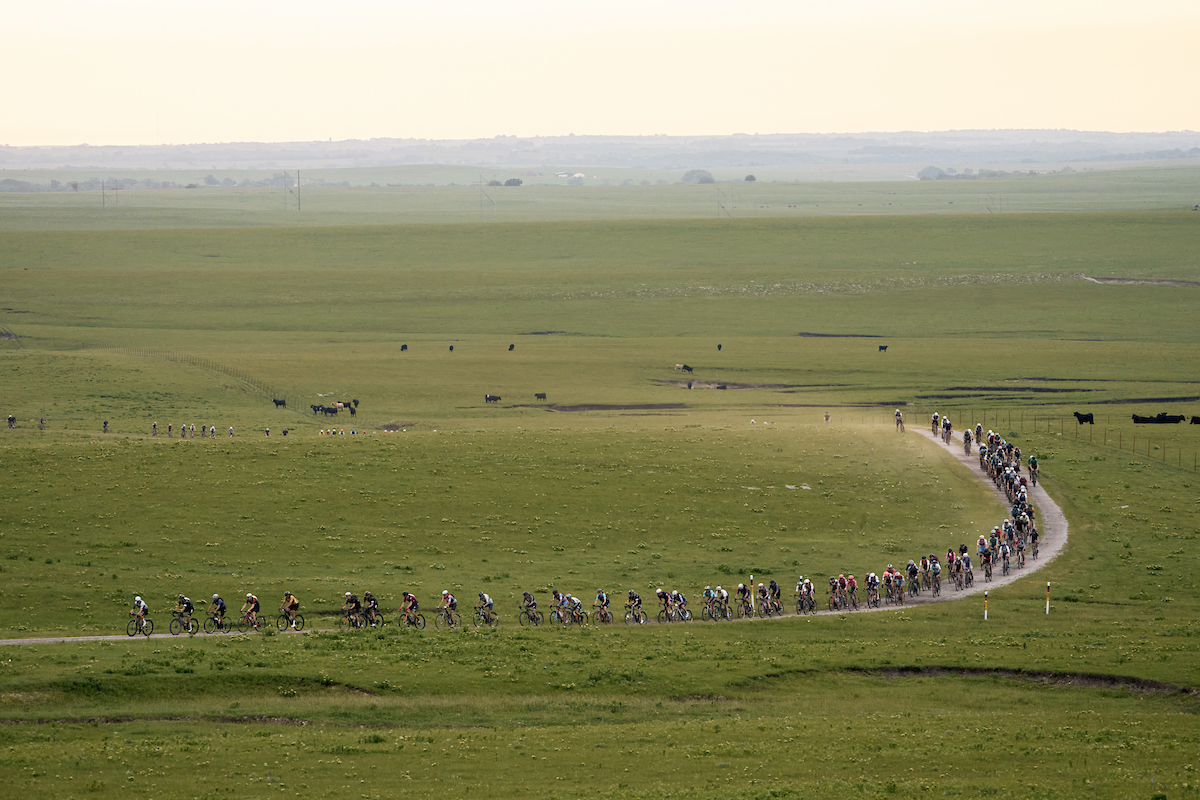
The famed Flint Hills
It was an explosion that was happening simultaneously across the country. The first Unbound Gravel (then named Dirty Kanza) was held in 2006. Like Barry-Roubaix, it utilised the gravel roads that littered the region, this time the Flint Hills around Emporia, Kansas. The first running featured 34 entrants and was won by Dan Hughes.
Hughes, who had long been enjoying gravel century rides on his local roads in Lawrence —about an hour’s drive from Emporia— prior to racing Unbound, is now a gravel racing legend. After that first victory, which he describes as a “transformative moment”, he went onto to win Unbound three more times, finishing 11 editions to date, as well as winning a gravel worlds overall and a Trans-Iowa V13 to name but a few.
Alongside Yuri Hauswald, Rebecca Rusch and others, Hughes helped define the early iterations of Unbound. He also may have inadvertently helped design the gravel bike in the process. Hughes’ winning bike from ‘06 was built by Brent Steelman, a frame builder from Redwood City, California. It featured clearance for high volume tyres, in this case a set of 40mm Bruce Gordons, as well as shorter chainstays, both commonplace on gravel race bikes today.
But these early events didn’t just help inform what today’s gravel racers ride on. They also helped shape how and why they ride. While Sagan turning up at Unbound or Remco Evenepoel racing a Belgian Waffle Race is good for publicity, the real draw is the camaraderie that comes from mass starts with men and women of all ages riding together. Back in the early days of Paris to Ancaster, Barry Roubaix, Unbound and numerous others like them, the enjoyment for many was in completing the race rather than attempting to win it.
“You know, I think competition has always been a part of it. But at the end, it was all about the party, the social bit of it, reliving the experience," said TenCate. "You are cheering for each other because of the battle you went through.”
Gravel in the UK: The Fellowships
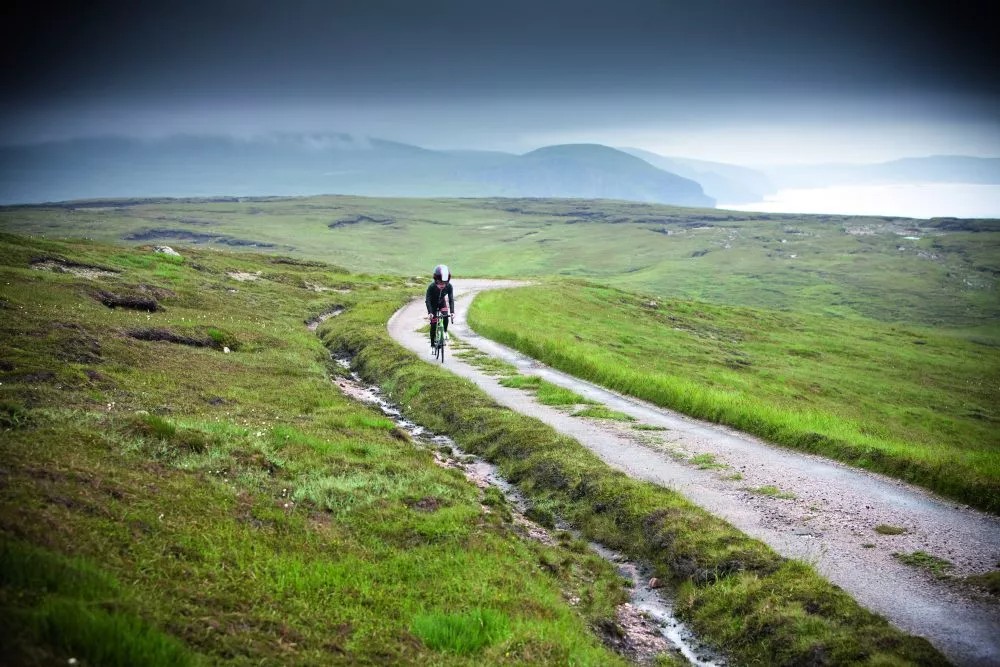
While gravel in the US is claiming the spotlight right now, the UK has its own long gravelly history.
Take the Rough-Stuff Fellowship for example. This crew, founded by Liverpudlian Bill Paul in 1955, claims to be the oldest off-road cycling club in the world.
"We can arguably claim to have been the first mountain or gravel biking club and our members were 'bike-packing' long before the current trend was invented so we're certainly not your average off-road cycling club," the website states.
In an age long before suspension or wide, tubeless tyres, this hardy crew with 40 funding members tackled some of the most rugged and remote parts of Britain. Pushing the boundaries of where they could ride (or hike) their bikes, some members traveled to the Dolomites, Australia and even, Nepal — riding from Kathmandu to the base of Everest.
With over a thousand members, the Rough-Stuff Fellowship is still going strong today. Their club is a resource for off-road cycling routes, ride reports, group rides and advice.
And then there's infamous Cape Wrath Fellowship, dreamt up by one of our very own former columnists, Rex Cowley, in 1949.
This fellowship is dedicated to the experience of riding along Britain’s wildest, most remote and 'loneliest' road: from Keoldale to Cape Wrath. One of only two capes in the entire country, it sits on the north-west tip of Scotland, a beautiful wilderness with dramatic cliffs where the North Sea battles the Atlantic Ocean.
To join the fellowship, all you have to do is complete the trek and send in your accomplishment to receive a certificate. The trek, however, is far from an easy task.
The trek sets out from Keoldale and requires as rowing boat ferry across the Kyle of Durness before setting off on the loneliest road in Britain.
The road was built in 1828 to service the Cape Wrath lighthouse; it is 11 miles long, very narrow, and rough for most of the way. There’s military activity some days, but otherwise nobody lives in the 107 square miles of its ancient landscape.
These days, the Fellowship is managed by Cycling UK, and one can still obtain an official certificate if you send in your evidence of completion.
The rise of the gravel pro

The appeal of those early gravel races proved infectious. Particularly if you happened to be craving a new challenge.
“Around 2016 I'm lining up for these amazing races that people love. I'm doing the Tour of Flanders and racing around the Champs-Élysées. I'm doing these incredibly iconic and beautiful races. But I was finding that I was no longer inspired by that," Alison Tetrick told Cycling Weekly.
At the time Tetrick was at the top of her profession, riding in Europe and across the world on the road. Her palmarès was growing fat but after failing to make the Olympics because of a crash she began to question both the travel required and the risk versus reward that comes with road racing at the elite level.
Living in Petaluma, California, she trained regularly with Yuri Hauswald, the aforementioned winner of the 2015 edition of Unbound. She was also surrounded by a grassroots cycling community that had long embraced the idea of adventure by bike, from the pioneering days of mountain biking to mixed surface riding perhaps best encapsulated by the Grasshopper Adventure Series. Founded by Miguel Crawford, these rides date back to the late ‘90s, another precursor to gravel as we now know it.
“I'm looking at these people who are just having so much fun getting dirty, getting off the beaten path,” Tetrick said. “But it never fit into my race calendar, you know, because I have to do my intervals and I’ve got to fly back to Europe, or wherever I gotta go. And these guys I train with were heckling me, you know, ‘you got to try this’."
Eventually she did. She convinced her team director to allow her to race the 2017 edition of Unbound 200, a distance wholly unfamiliar to her at the time.
“So I put it in my world tour calendar, and I got approval from my directeur sportif because I think he knew it would make me happy. And you know, happy riders go faster in general,” said Tetrick.
It turns out she was right.
“It was my first time doing gravel. Two hundred miles. I've never ridden over 120 miles. I was terrified but excited,” Tetrick said. “And I went and it was awesome. I'm lining up with thousands of people, which is terrifying, right? The streets are lined with thousands of people. I finished the day. I won, which made it pretty sweet. Very sweet. But also it was the first time in my career I was really proud of myself.”
For Tetrick, that first experience, and first win, at Unbound proved to be the catalyst to a new phase in her career. And fortunately her life on the road provided plenty of transferable skills.
Today Tetrick is one of gravel racing’s most identifiable faces, and in May 2023, Tetrick was inducted in the Gravel Hall of Fame alongside her friend Hauswald.
“When I first did Unbound, people asked me if that’s the hardest thing you've ever done,” she said. “I was like, try being a domestique at Flèche Wallonne! I rode a lot in the wind in my career. I'm not a huge fan of drafting and I really like high rolling resistance. I like to do a heavy gear. Just bulldoze. So gravel racing definitely suited me.”
In the past two years, Tetrick has returned to Unbound Gravel in service of others, leading a pace group of riders who wanted to make the finish line before sunset, with people donating to two of Tetrick’s charities. She describes it as a “new way to interact” and to give back.
“I want to make sure I'm investing in this sport that has provided me this opportunity to ride my bike all over the world.”
It’s also an example of how today’s signature gravel races, despite the growing professionalism, are still doing plenty to ensure that the flavor of those early gravel races remain. While Tetrick acknowledges that the depth of the professional field has increased, she’s confident that the spirit of the old days will be left intact.
“I think there are events for everybody,” she said. “One of the big components of gravel is the inclusivity. And it's just everybody's welcome, like wear what you want, ride whatever bike you want.”
And for Scott TenCate, while much about Barry Roubaix has changed, there’s also plenty that hasn’t.
“It’s certainly grown into a huge event,” he said. “We have a purse of over $40,000 of cash and prizes. And we have pros and beginners and everyone alike. But I think what we have tried to create is an event that is for everybody.”

Dutchman Ivar Slik on his way to becoming the first non-American to win Unbound
The future is bright...and inclusive
It was also Carl Sagan who said, “Somewhere, something incredible is waiting to be known.”
While the origins of gravel racing appear alive and well today, how does the sport progress from here? There is now a UCI-sanctioned Gravel World Series, perhaps the most obvious sign of the sport’s growth but also that it may be approaching a crossroad. Both Tetrick and TenCate are well positioned to speculate on the future of gravel racing, and both are optimistic.
“I think the the sport is not saturated by any means yet,” Tetrick said. “I think there's opportunity for an increase of events and still plenty of innovation from the industry, we're not tapped out there at all. These big events, I don't see a chance where they're not selling out, with a lottery list longer than our height is, but I think there is an opportunity for smaller events and also to grow internationally.”
As for her role in this growth, Tetrick is keen to continue to push herself, to experience new races like the five-day point-to-point Oregon Gravel Grinder she’s done the past couple of years, while ensuring that she still does her part to honor the roots of the sports that welcomed one and all.
“I want to see if this pace group is a thing because sometimes, you know, it's very daunting to go off road,” she said. “I mean, when I first did Unbound and the gravel worlds and all of these races, I would glorify the suffering and the ‘alone’. It's me against the course. And I persevered and I cramped and I was hallucinating, and then I won. But why does it have to be like that? Why do you have to be alone? What if I could provide opportunity for people to achieve their goal, and this year I road all 200 miles and I was never alone. I was never with less than 20 people. And we all finished.”
Likewise, when asked about what’s next for gravel racing TenCate is sure that whatever it is, it needs to be driven by equality.
“It’s a huge difference when you have 300 people out on the course versus 4,000 people. That adds to a different experience. And it's also a good thing,” he said. “But our decision is to basically treat everyone on a very level playing field. Peter Stetina (ex-WorldTour pro, now gravel privateer) raced here last fall and had a great race. But you know, we treat him and his visit to the Barry Roubaix, no differently than we treat the first timer, or someone showing up on a hybrid bike. We try to remind people that sportsmanship is first and foremost. And I think that is, to me, the essence of gravel racing. It’s knowing that if I need to stop and help you because you have a flat that's going to add to my experience. It’s more based on the experience than the result.”
At this year’s Unbound both the winners of the 200, Ivar Slik and Sofia Gomez Villafañe, did so in record times, with Slik finishing in under ten hours, averaging a little over 21mph. Meanwhile the last finishers headed down Commercial Street in downtown Emporia some ten hours later, having spent almost an entire day out on the course. Both represent the future of gravel racing and both reflect its past. Competition and camaraderie helped create gravel racing and they’ll surely sustain it too.
Like TenCate said, “gravel is just open to everyone that has a bike.”

Thank you for reading 20 articles this month* Join now for unlimited access
Enjoy your first month for just £1 / $1 / €1
*Read 5 free articles per month without a subscription

Join now for unlimited access
Try first month for just £1 / $1 / €1
Luke Friend has worked as a writer, editor and copywriter for twenty five years. Across books, magazines and websites, he's covered a broad range of topics for a range of clients including Major League Baseball, the National Trust and the NHS. He has an MA in Professional Writing from Falmouth University and is a qualified bicycle mechanic. He has been a cycling enthusiast from an early age, partly due to watching the Tour de France on TV. He's a keen follower of bike racing to this day as well as a regular road and gravel rider.
- Anne-Marije RookNorth American Editor
-
 Aero bikes with gravel wheels?: Six tech insights from Paris-Roubaix Femmes
Aero bikes with gravel wheels?: Six tech insights from Paris-Roubaix FemmesEverything we found out about tyre widths, self-inflating systems, and wheel choices from the cobbled Monument
By Tom Davidson Published
-
 'This race is absolutely disgusting': Peloton reacts to another brutal Paris-Roubaix Femmes
'This race is absolutely disgusting': Peloton reacts to another brutal Paris-Roubaix FemmesNow in its fifth edition, Paris-Roubaix Femmes is still a tough race, even for the best bike riders in the world
By Adam Becket Published
-
 Tom Dumoulin will race Unbound Gravel and Sea Otter Classic — 'I’m not unfit but I’m not racing for the prizes'
Tom Dumoulin will race Unbound Gravel and Sea Otter Classic — 'I’m not unfit but I’m not racing for the prizes'In an exclusive interview, the former Grand Tour star opens up about life after retirement and rediscovering joy on the bike
By Anne-Marije Rook Published
-
 UPDATE: Mid South Gravel cancels event last minute as wildfires rage - 'Many of our friends have lost their homes today, we are devastated' -
UPDATE: Mid South Gravel cancels event last minute as wildfires rage - 'Many of our friends have lost their homes today, we are devastated' -As wildfires sprung up around the region, riders and residents had been evacuated and asked to shelter in place.
By Anne-Marije Rook Last updated
-
 'It's going to be wild' - Ribble launches new gravel team with ex-WorldTour pros
'It's going to be wild' - Ribble launches new gravel team with ex-WorldTour prosSix-rider all-British squad to take on the biggest gravel events in the world
By Tom Davidson Published
-
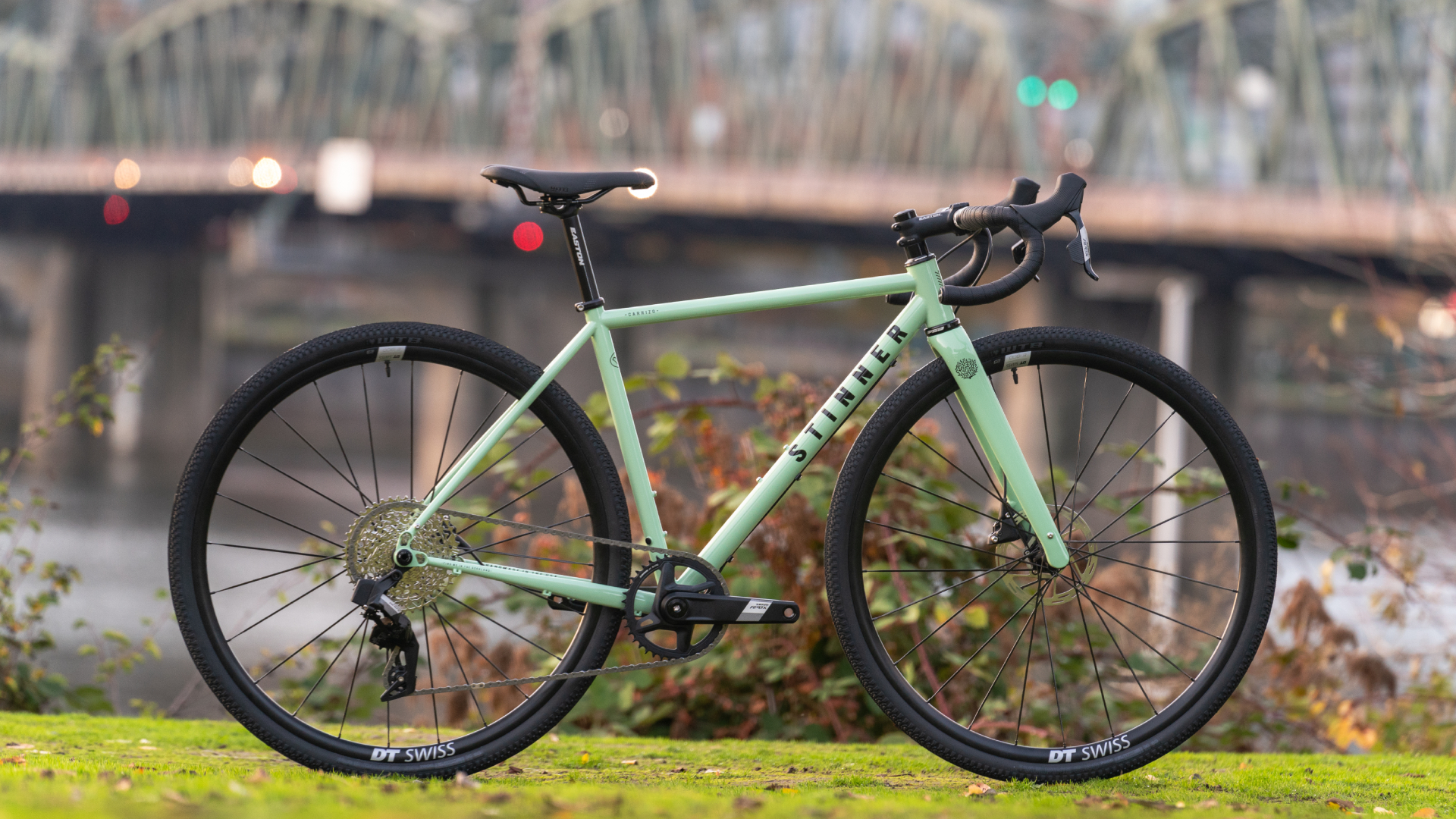 Stinner’s first stock program makes US handmade bikes accessible — and they ride well, too!
Stinner’s first stock program makes US handmade bikes accessible — and they ride well, too!The Stinner Carrizo Select blends custom craftsmanship with accessibility, offering a handmade alternative to mass-market bikes built overseas
By Anne-Marije Rook Published
-
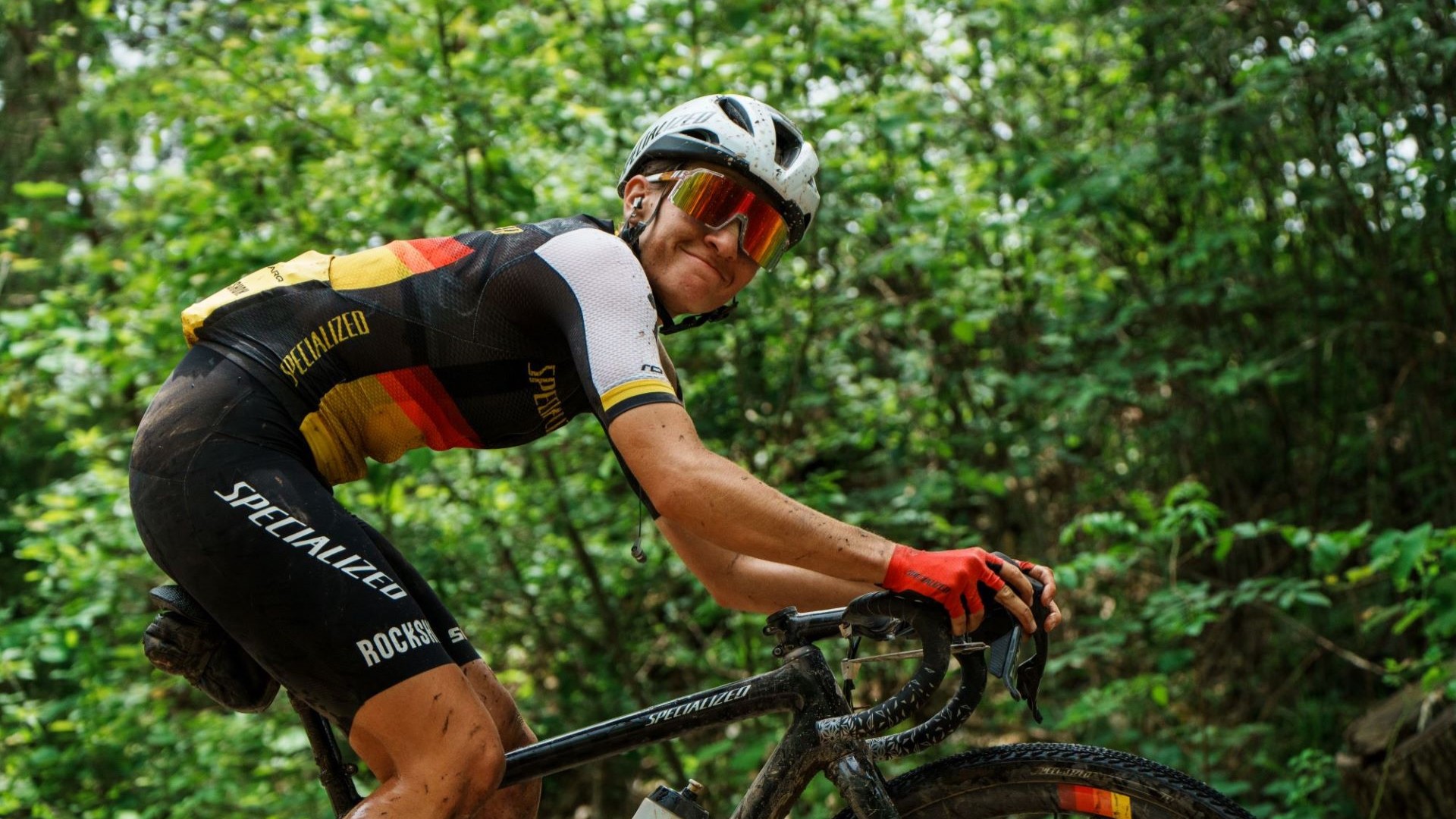 15 things you didn’t know about two-time Life Time Grand Prix winner Sofía Gómez Villafañe
15 things you didn’t know about two-time Life Time Grand Prix winner Sofía Gómez VillafañeMTB Olympian, Unbound winner, two-time Life Time Grand Prix series victor — meet the queen of off-road racing.
By Kristin Jenny Published
-
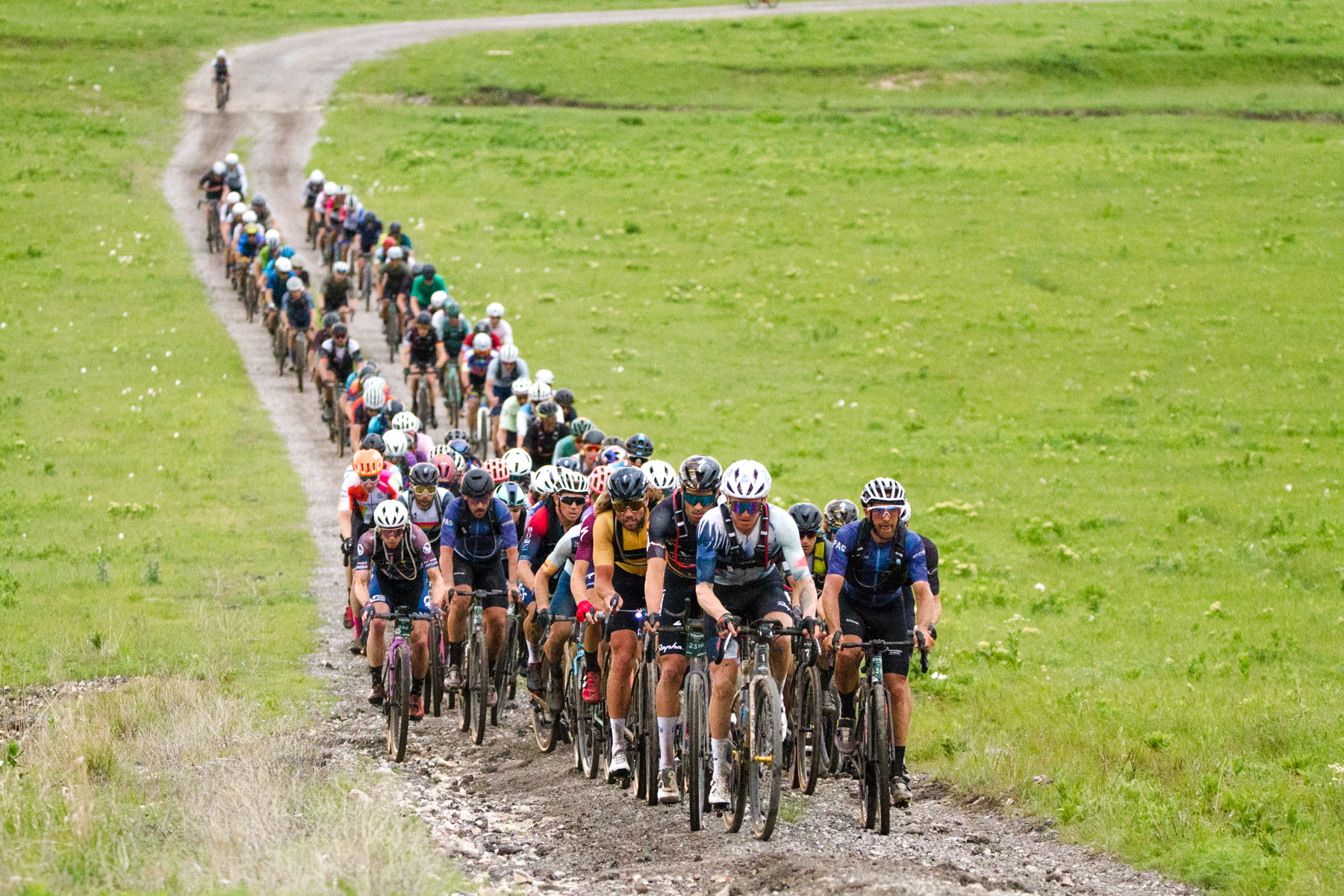 Gravel races near you and worth traveling to: Your guide to 2025's biggest gravel events and key registration dates
Gravel races near you and worth traveling to: Your guide to 2025's biggest gravel events and key registration datesHere are the registration dates for gravel’s biggest events around the globe
By Anne-Marije Rook Last updated
-
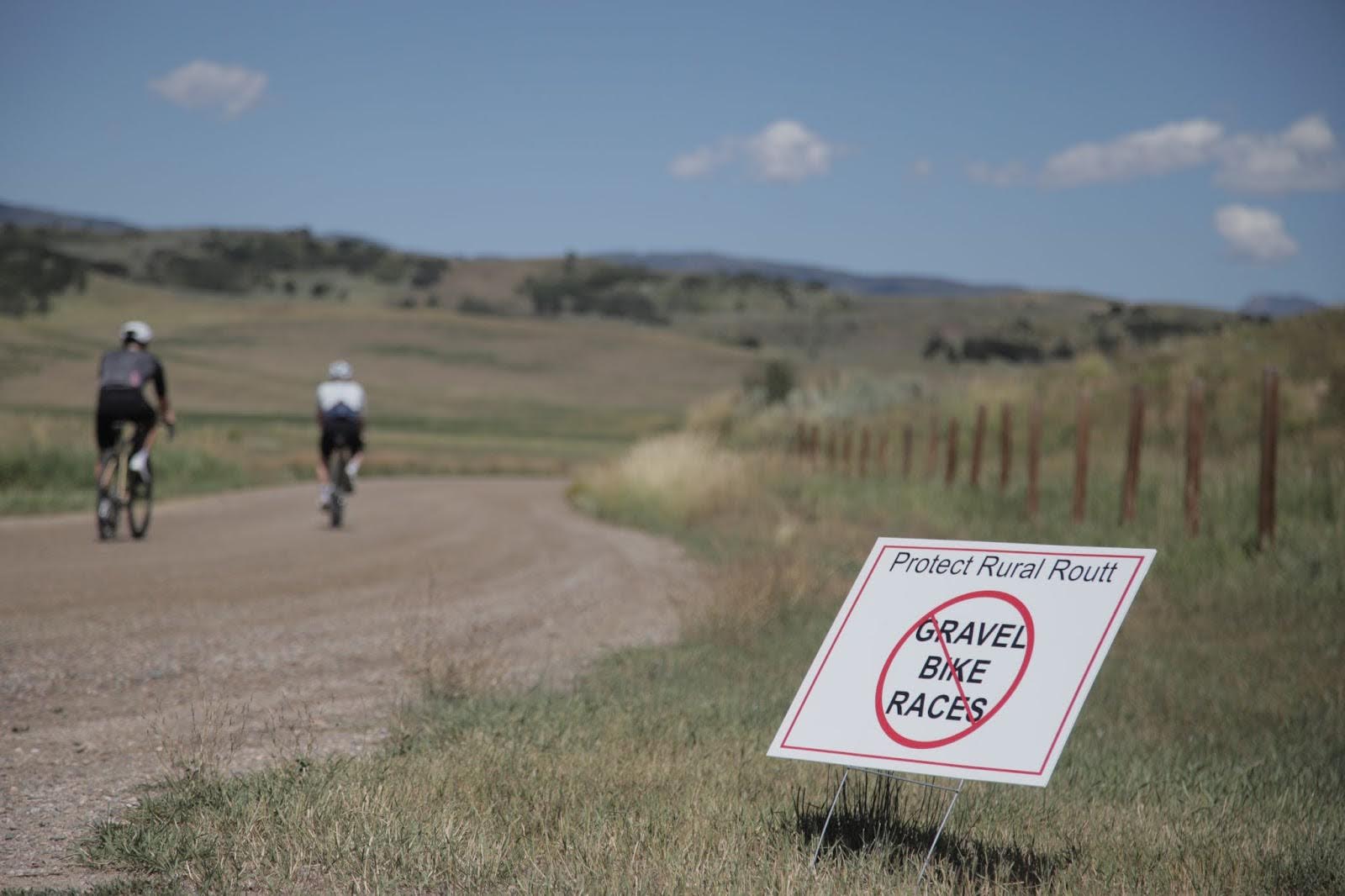 SBT GRVL lives! The story of just how close the gravel community came to losing one of its biggest events
SBT GRVL lives! The story of just how close the gravel community came to losing one of its biggest eventsHere are all the details on what the revamped event will look like in 2025 as government headwinds continue to push against the event
By Logan Jones-Wilkins Published
-
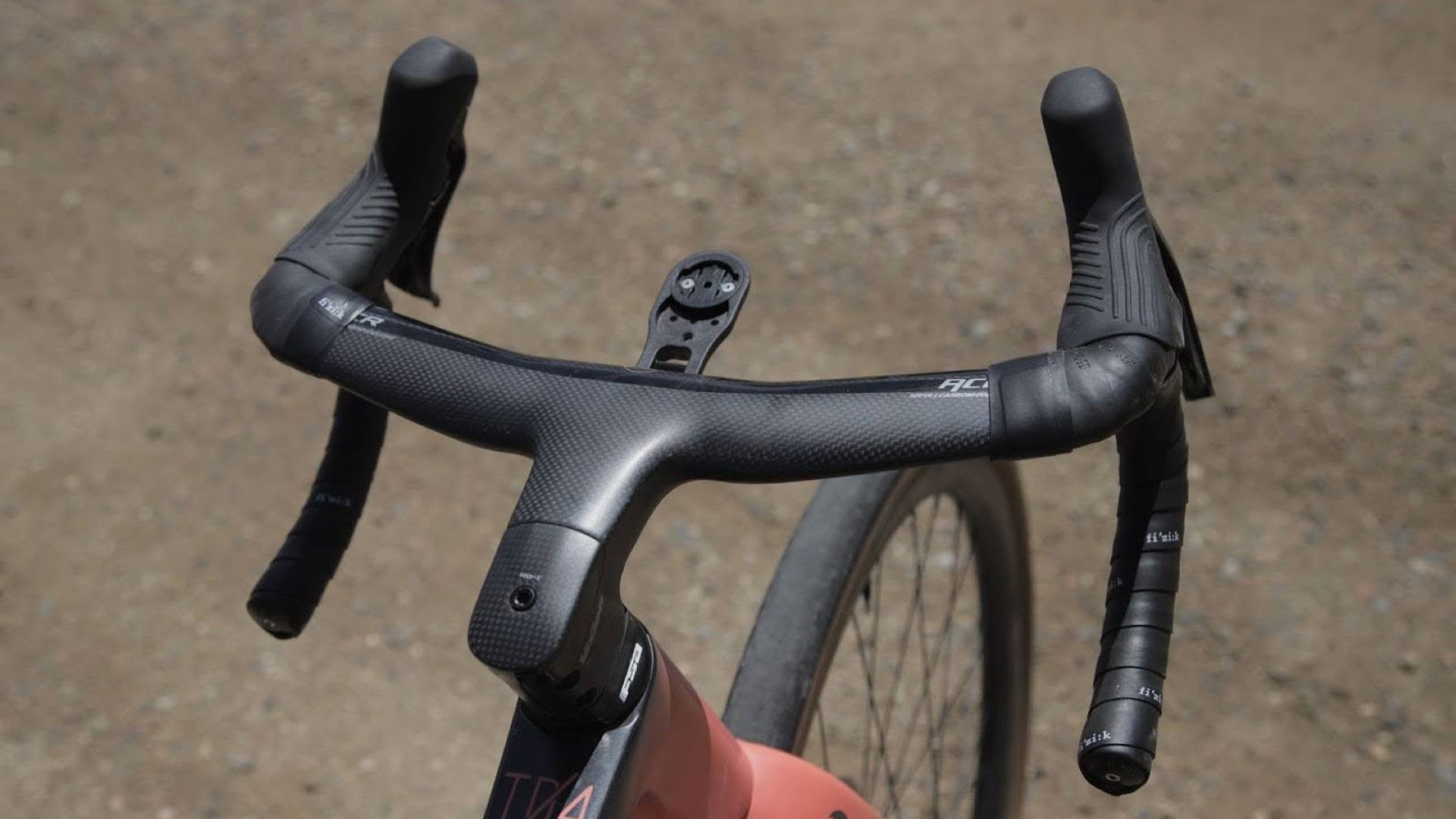 Integrated cockpits on gravel bikes: is it fashion over function, or an upgrade worth considering?
Integrated cockpits on gravel bikes: is it fashion over function, or an upgrade worth considering?Are the pros really worth the mechanical cons? Here's what to know before going all in(tegrated)
By Logan Jones-Wilkins Published